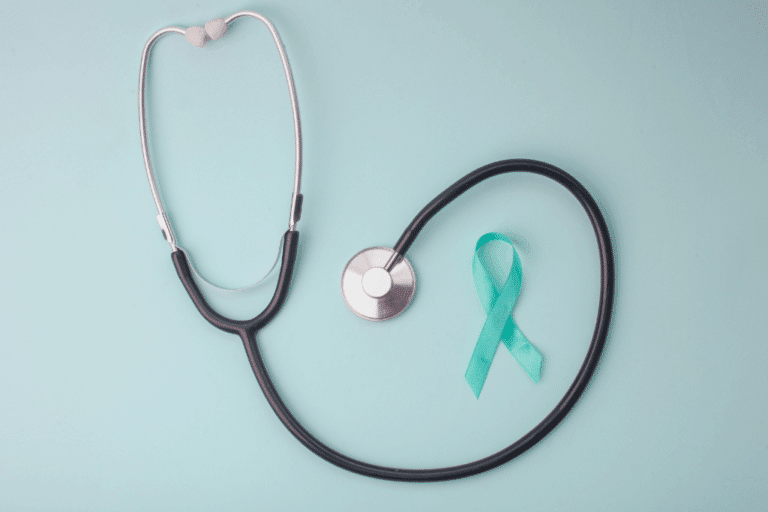If you’ve ever wondered why your friend is thriving on hormone replacement therapy (HRT) while you’re still waking up drenched in sweat, moody, and exhausted—even though you’re both using the same estrogen patch—this post is for you.
Hormone therapy is often marketed as a predictable, reliable solution to menopausal symptoms. But the truth? It’s anything but “one size fits all.”
A recent study published in Menopause confirms what many of us in the trenches already know: there’s a huge range in how women absorb transdermal estradiol (aka estrogen patches and gels).
And if you’re not absorbing what you’re applying, you’re not getting symptom relief—or the long-term benefits of hormone therapy for your bones, brain, and heart.
Let’s dive into what the study showed and why it matters.
What the Study Looked At
Researchers reviewed data from 1,508 women—both perimenopausal and postmenopausal—who were using transdermal estradiol (patches or gels) and attending a specialist menopause clinic in the UK.
Most were using standard licensed doses (like a 50mcg patch or a daily pump of gel), while others were on higher, off-label doses based on symptom response. The team looked at the women’s serum estradiol levels—in other words, how much estrogen was actually circulating in their bloodstream after applying their hormone therapy.
Here’s what they found:
- The median estradiol level was about 97 pg/mL (355 pmol/L).
- Some women had levels well over 250 pg/mL… and others? Well under 30.
- Nearly 25% of women using the highest licensed dose had estradiol levels below 55 pg/mL—which is likely too low for most to feel a noticeable benefit.
- Gel users had more variation in levels than patch users.
This confirms that there is no guaranteed “standard dose” that works the same for everyone. And without testing, we’re flying blind.
Why Is There So Much Variation?
The differences in estradiol absorption come down to you. Your body. Your skin. Your age. Your metabolism. And a bunch of other factors that make you wonderfully unique.
Here are just a few of the things that can influence how well you absorb transdermal estradiol:
Skin health & hydration
Estradiol is absorbed through the skin, so skin thickness, hydration, and integrity matter. Dry, damaged, or aging skin can reduce absorption.
BMI and body fat percentage
Estrogen is a fat-soluble hormone, so higher body fat can affect how it’s distributed and metabolized. In women with higher BMIs, estrogen may be stored in fat tissue, resulting in lower active levels in the bloodstream.
Age
As we age, skin becomes thinner and drier, which can impact absorption. Liver metabolism and hormone clearance can also change over time.
Application technique
Where you apply the patch or gel (inner thigh vs. arm vs. abdomen), how recently you showered, whether you moisturized beforehand, and even how vigorously you rub in the gel—all of these can change how much gets into your system.
Gut, liver, and thyroid health
Even with transdermal delivery, estrogen still passes through the liver to some extent. If your detox pathways are sluggish or your thyroid is underactive, it can impact how your body processes hormones.
Medications & supplements
Some medications or supplements can speed up or slow down estrogen metabolism, affecting how long it stays in your system.
Special Considerations for Women Over 50
If you’re postmenopausal and over 50, there are a few additional things to keep in mind:
- You may need higher doses to maintain estradiol levels in a beneficial range for bone, brain, and cardiovascular health—especially if you’re far out from your final period.
- Estradiol levels tend to decline with age due to decreased skin absorption and slower metabolic response, so regular monitoring becomes even more important.
- Symptoms may change—even if you didn’t need HRT in your 40s, new symptoms (like joint pain, brain fog, or insomnia) can pop up in your 50s that respond beautifully to properly dosed HT.
Bottom line? Age affects both how you absorb hormones and how your body responds to them. What worked at 45 may not work at 55.
What Estradiol Levels Are “Enough”?
This is the million-dollar question—and while every woman’s sweet spot is unique, research gives us some helpful targets:
For Bone Protection
- You want to keep estradiol levels above 60 pg/mL to support bone density and reduce fracture risk. Below that, bone loss accelerates significantly.
For Hot Flash Relief
- Partial relief (~50%) of hot flashes typically occurs when estradiol reaches 40–50 pg/mL.
- Complete relief often requires levels of 70–100+ pg/mL.
- Many of my clients don’t feel fully like themselves until we get into the 80–100 pg/mL range and stay there consistently.
Again, this will vary based on your unique body, estrogen receptor sensitivity, and other hormone levels (like progesterone or testosterone). But these are great reference points if you’re wondering whether your current dose is doing its job.
Why Testing Is a Non-Negotiable
Many doctors still don’t routinely test estradiol levels once a woman starts hormone therapy. Instead, they base adjustments on symptoms alone.
But symptoms can be vague. Fatigue, weight gain, low libido, poor sleep—these can have multiple causes. Testing gives us data. It helps us answer: Is this actually working for your body?
When you work with me or another hormone-literate provider, we’re not just guessing—we’re checking to make sure your estradiol levels are in a range that supports:
- Symptom relief
- Bone density
- Brain health
- Mood and mental clarity
- Vaginal and urinary health
And if they’re not? We tweak it. You deserve that level of care.
The Takeaway
If you’re on hormone therapy and still feel like a shadow of yourself, it doesn’t mean estrogen “isn’t working” for you. It might just mean your dose or delivery method isn’t right for your body.
This study is a wake-up call to stop settling for cookie-cutter hormone therapy. There’s no prize for toughing it out on a dose that isn’t doing the job.
Advocate for yourself. Ask for testing. Insist on individualized care. You’re not difficult—you’re just informed.
And informed women don’t settle.
Reference
Glynne, S., Reisel, D., Kamal, A., Neville, A., McColl, L., Lewis, R., & Newson, L. (2025). The range and variation in serum estradiol concentration in perimenopausal and postmenopausal women treated with transdermal estradiol in a real-world setting: a cross-sectional study. Menopause, 32(2), 103–111.
Read the full article here
Dr. Anna Garrett is a menopause expert and Doctor of Pharmacy. She helps women who are struggling with symptoms of perimenopause and menopause find natural hormone balancing solutions so they can rock their mojo through midlife and beyond. Dr. Anna is the author of Perimenopause: The Savvy Sister’s Guide to Hormone Harmony. Order your copy at www.perimenopausebook.com.
Dr. Anna is available for 1-1 consultation. Find out more at www.drannagarrett.com/lets-talk




